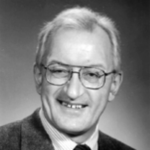New York: Teacher Certification Test
New York Times reporter Abby Goodnough recently related her experiences in taking New York State’s main certification exam for teachers, who must score at least 220 of a possible 300 to pass. Goodnough noted she had not taken a standardized test in 14 years and had virtually no preparation. In high school, she failed precalculus and took no science after 10th-grade chemistry.
Despite her limited math and science background, Goodnough achieved a perfect score on the certification exam’s math and science questions. Though as a reporter she was “mortified to report that my worst score–a 260–was on the essay,” she aced the test with a final score of 284.
However, 59 percent of the 4,314 other people who took the test with Goodnough that day failed.
“If I were in charge of the test, I would probably make it a little tougher,” she concluded.
The New York Times
August 23, 2000
California: Teacher Entrance Exam
In 1996, Mike Antonucci of the Education Intelligence Agency took the California Basic Educational Skills Test (CBEST), the state’s “teacher entrance exam,” to prepare for a story about a lawsuit filed by minority groups against the test. The reading, math, and writing tests require a passing score of 41 each, for a total of 123. Candidates who fail a particular portion of the test may retake just that portion.
According to state officials, 70 percent of test-takers passed on their first try, with 82 to 85 percent eventually passing. However, trial testimony revealed the first-time passing rate was 80 percent for whites, 60 percent for Asians, 47 percent for Hispanics, and 37 percent for blacks.
Antonucci scored 205 out of a possible 240, with his worst score–a 63–in writing.
The Education Intelligence Agency Communiqué
August 28, 2000
Washington: Grading the Test-Graders
Much attention has been focused on how students and teachers react to the grades they achieve on tests. Seattle Times reporter Jolayne Houtz recently took a different approach to test reporting, investigating how grades on the Washington Assessment of Student Learning are assigned.
The WASL is a series of reading, writing, and math tests that contain not only multiple-choice responses, but also “performance-based” assessments, such as short answers and essays. Such tests have been developed to respond to criticism that multiple-choice, machine-scored tests fail to provide a broad evaluation of student knowledge.
Houtz discovered the essays are scored by low-paid part-timers who may or may not have some expertise in what they are assigned to score. She estimated the score-givers spend only 2 ½ minutes on each essay, and as little as 20 seconds on each math problem.
The Seattle Times
August 27, 2000
George A. Clowes is managing editor of School Reform News.




